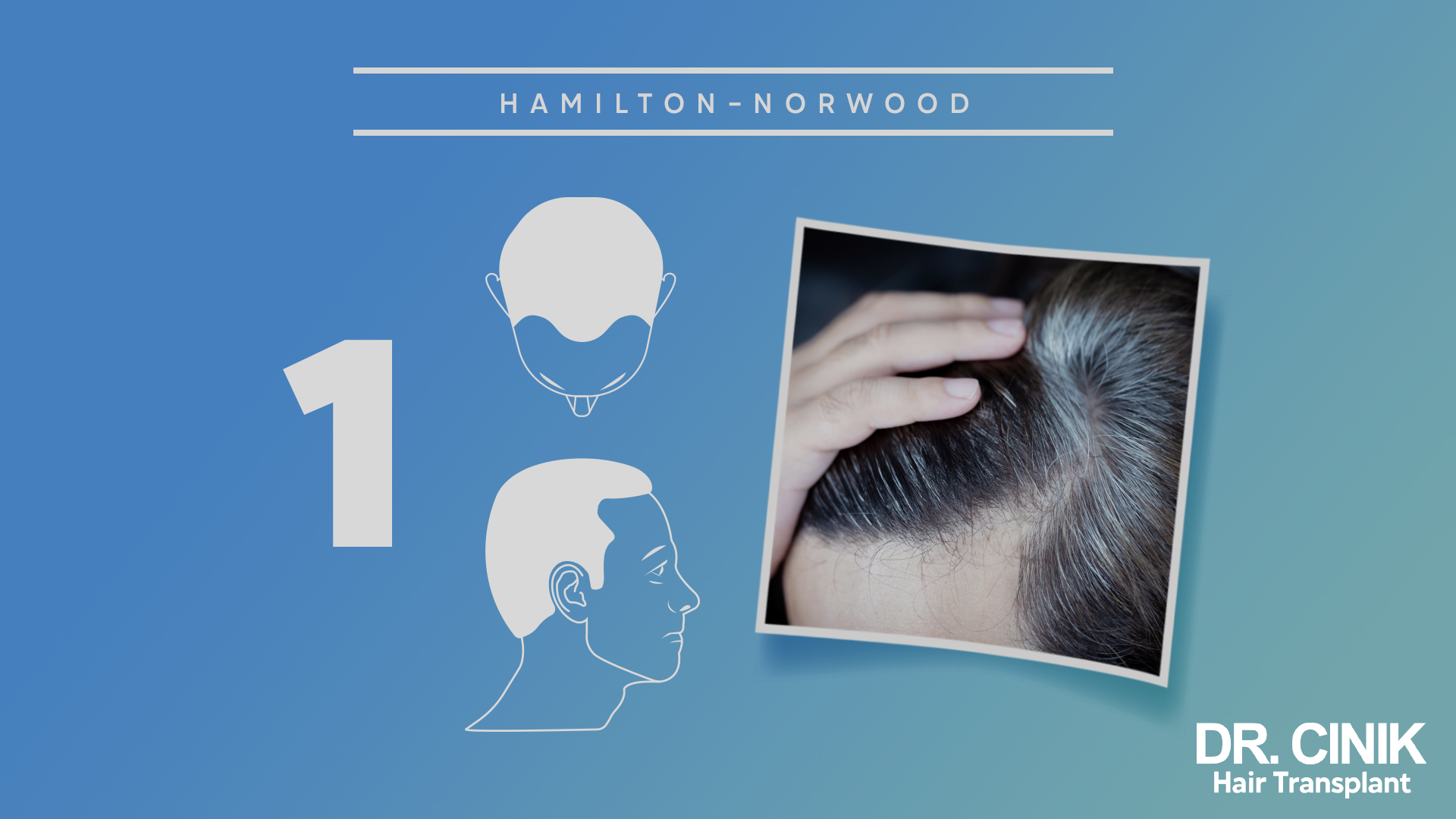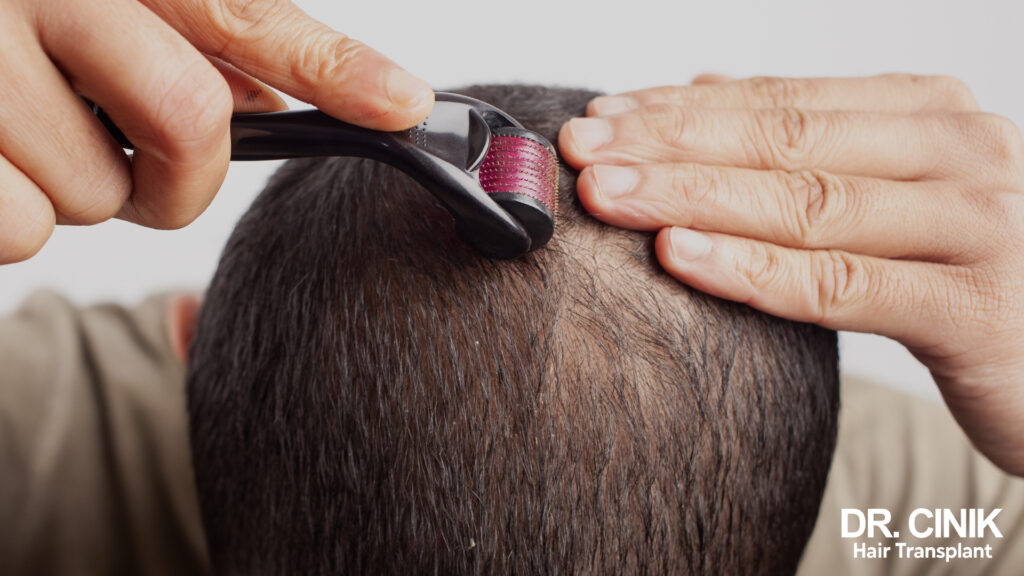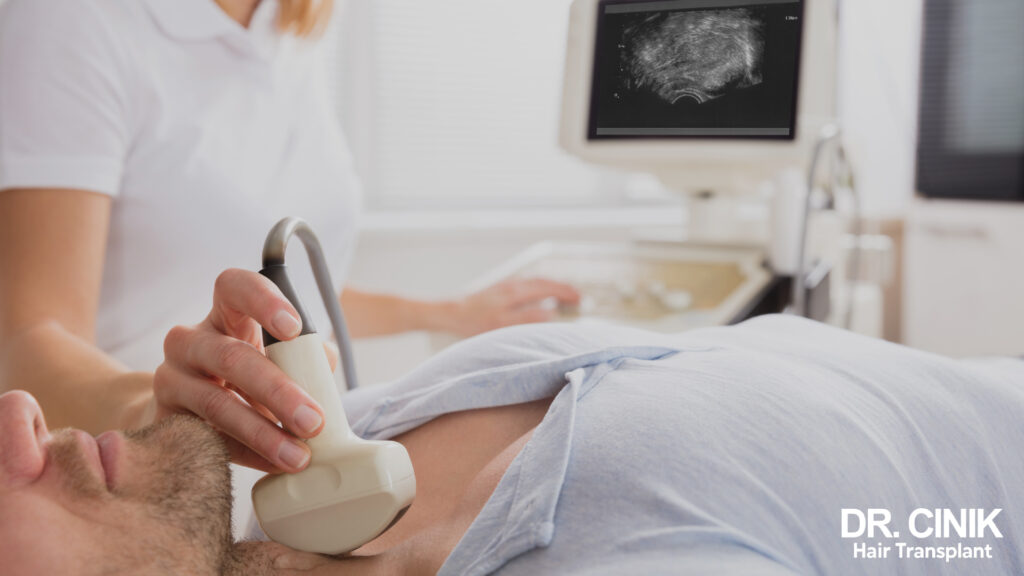Temple Hair Loss: Understanding and Treating This Early Sign of Androgenetic Alopecia
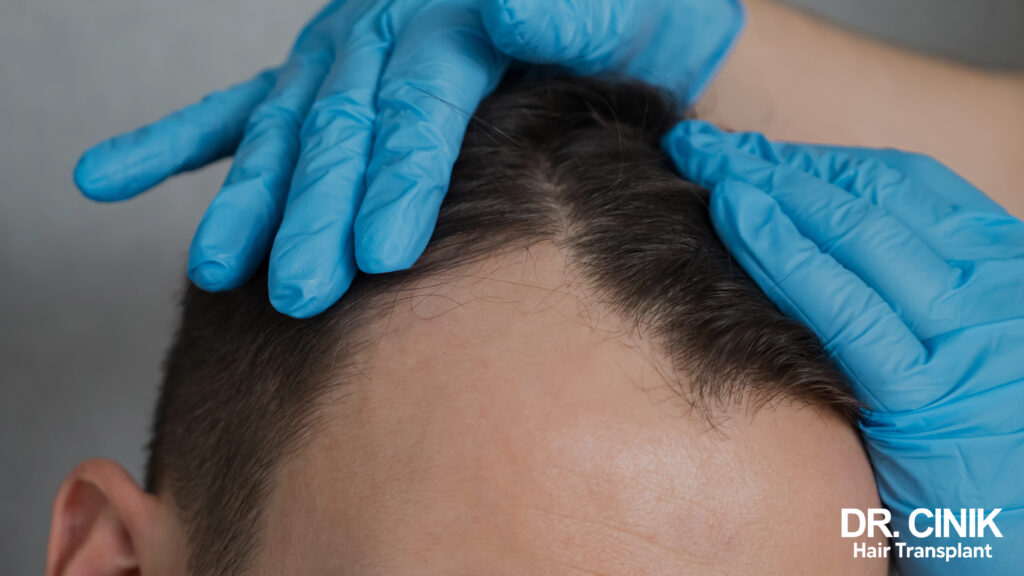
Sommaire
Temple hair loss, characterised by a receding hairline at the temples, is often the first visible sign of androgenetic alopecia in men. This hereditary form of hair loss is the most common, affecting many men from their late teens onwards. Understanding this phenomenon is essential for better prevention and treatment.
What is androgenetic alopecia?
Androgenetic alopecia, or male pattern baldness, is caused by genetic and hormonal factors. The main culprit is dihydrotestosterone (DHT), a hormone derived from testosterone. In predisposed individuals, DHT causes progressive miniaturisation of hair follicles, leading to the production of thinner and shorter hair.
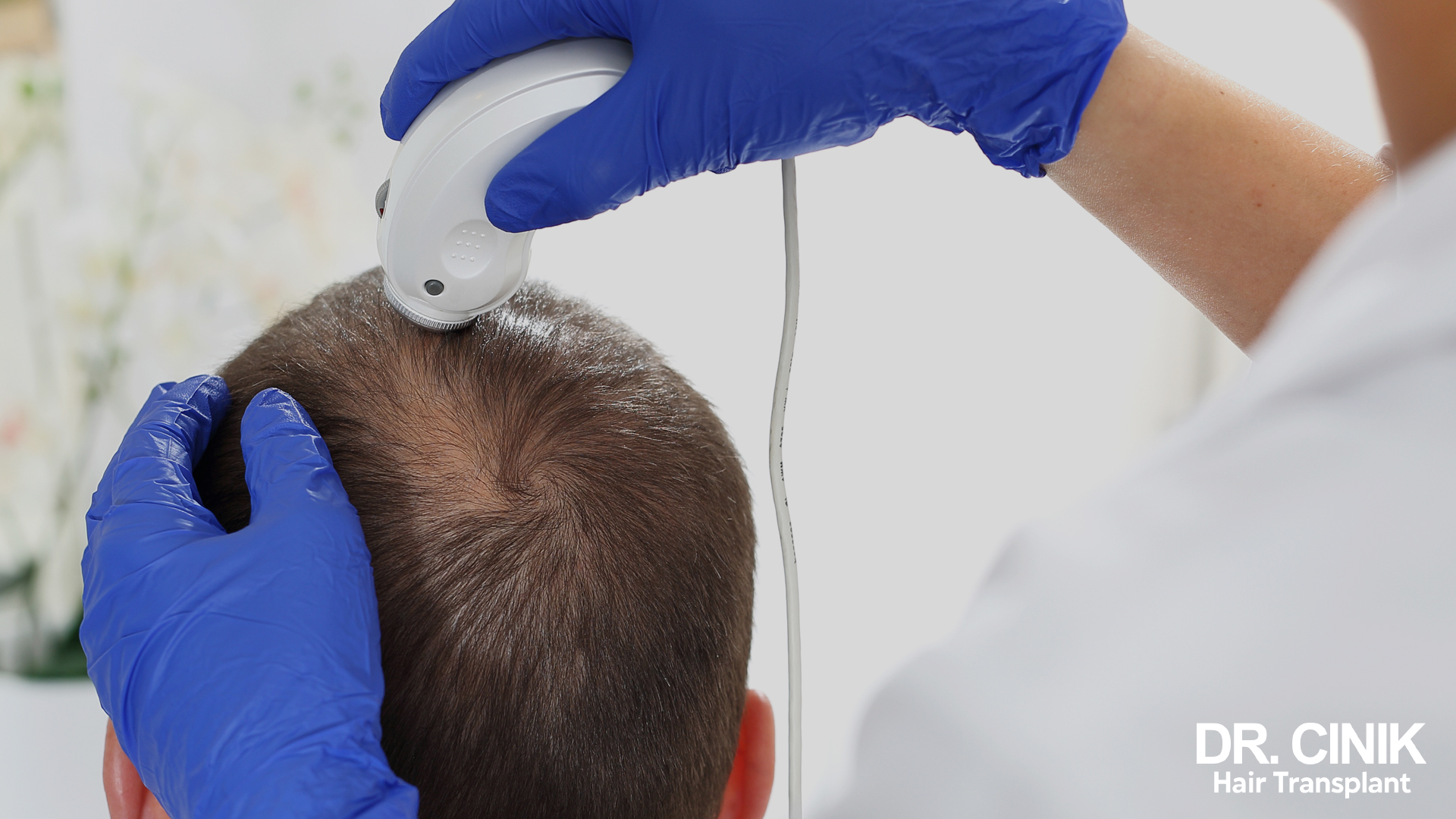
This process generally begins at the temples and can gradually extend to the crown of the head. It’s important to note that the speed and extent of hair loss varies considerably from one individual to another.
The Norwood-Hamilton scale: measuring the progression of hair loss
Specialists use the Norwood-Hamilton scale to assess the progression of hair loss. This scale comprises 7 stages:
- Stage 1: No significant recession of the hairline
- Stage 2: Slight symmetrical recession at the temples
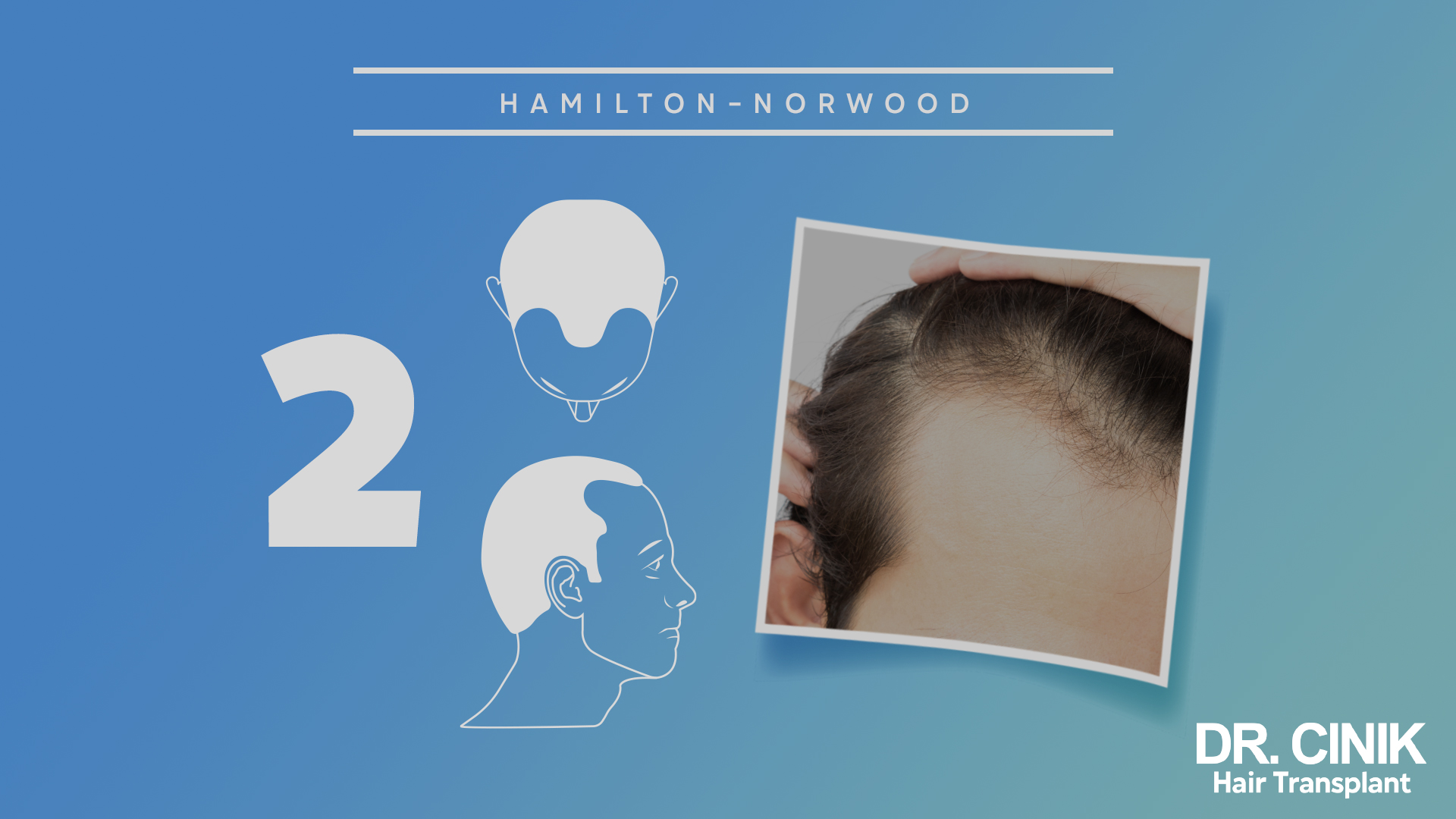
- Stage 3: More pronounced receding temples, onset of significant hair loss
Stage 3 Vertex: balding at the crown of the head
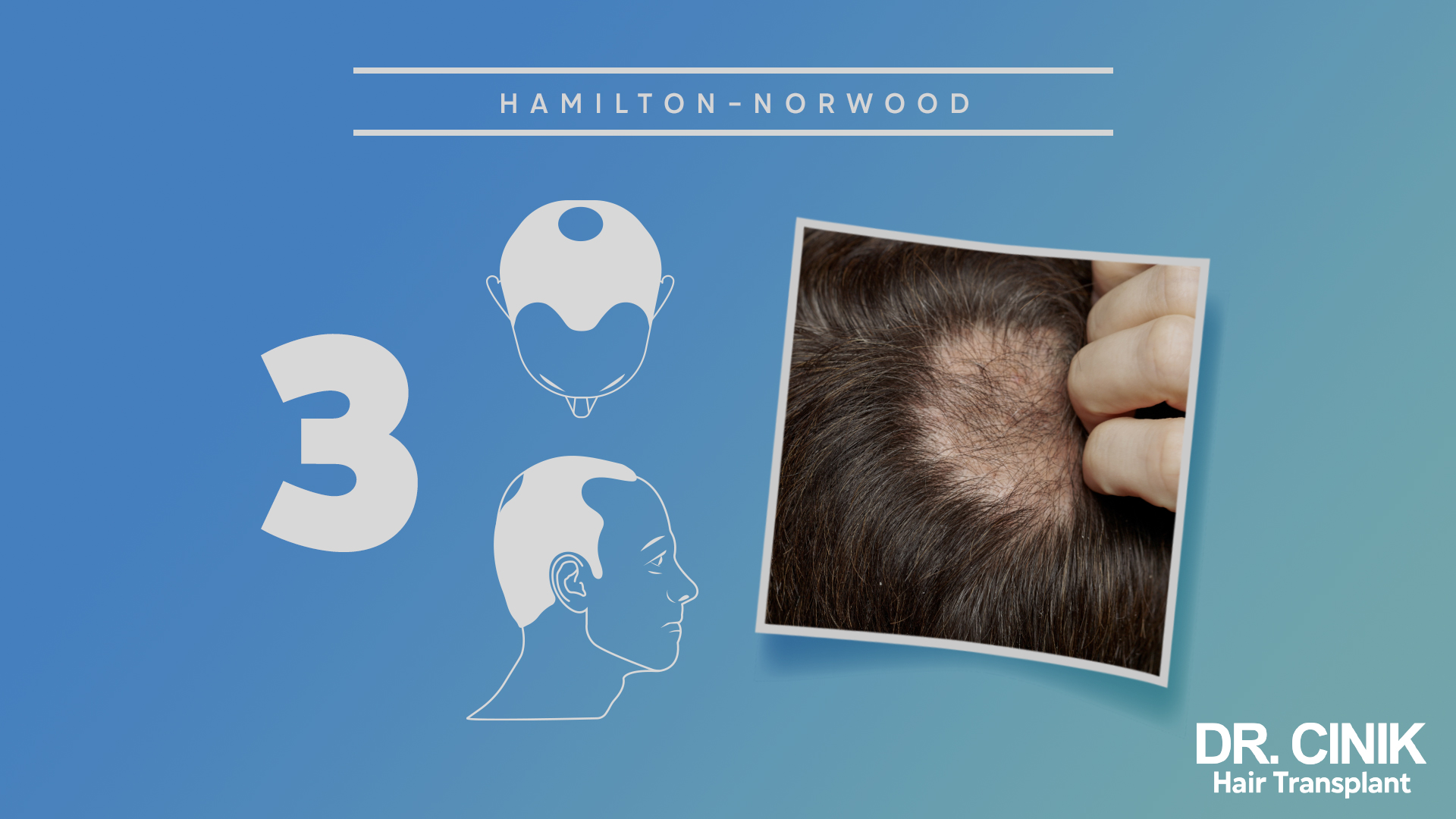
- Stage 4: Significant hair loss on the top of the head
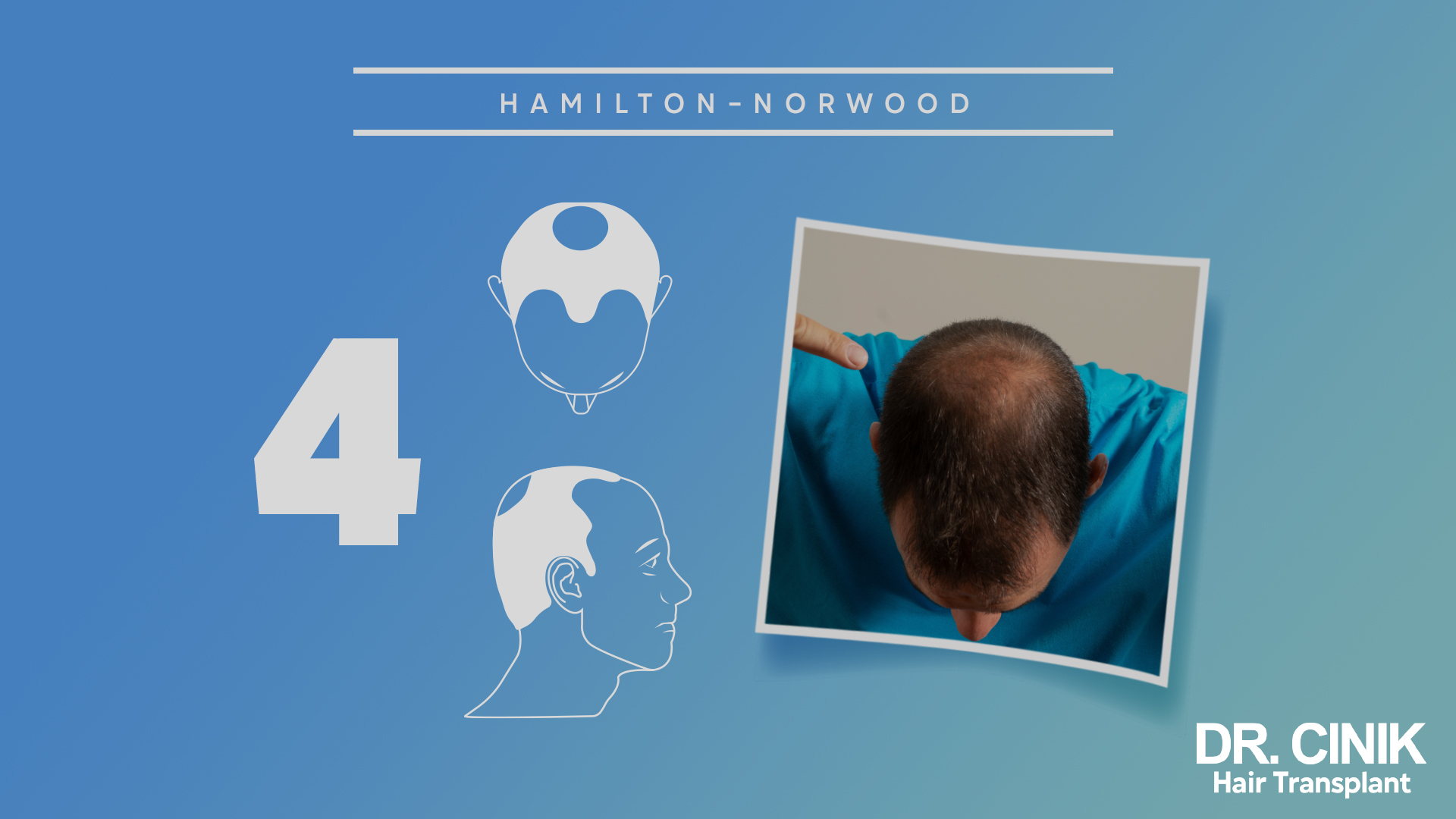
- Stage 5: The balding areas of the forehead and crown begin to merge
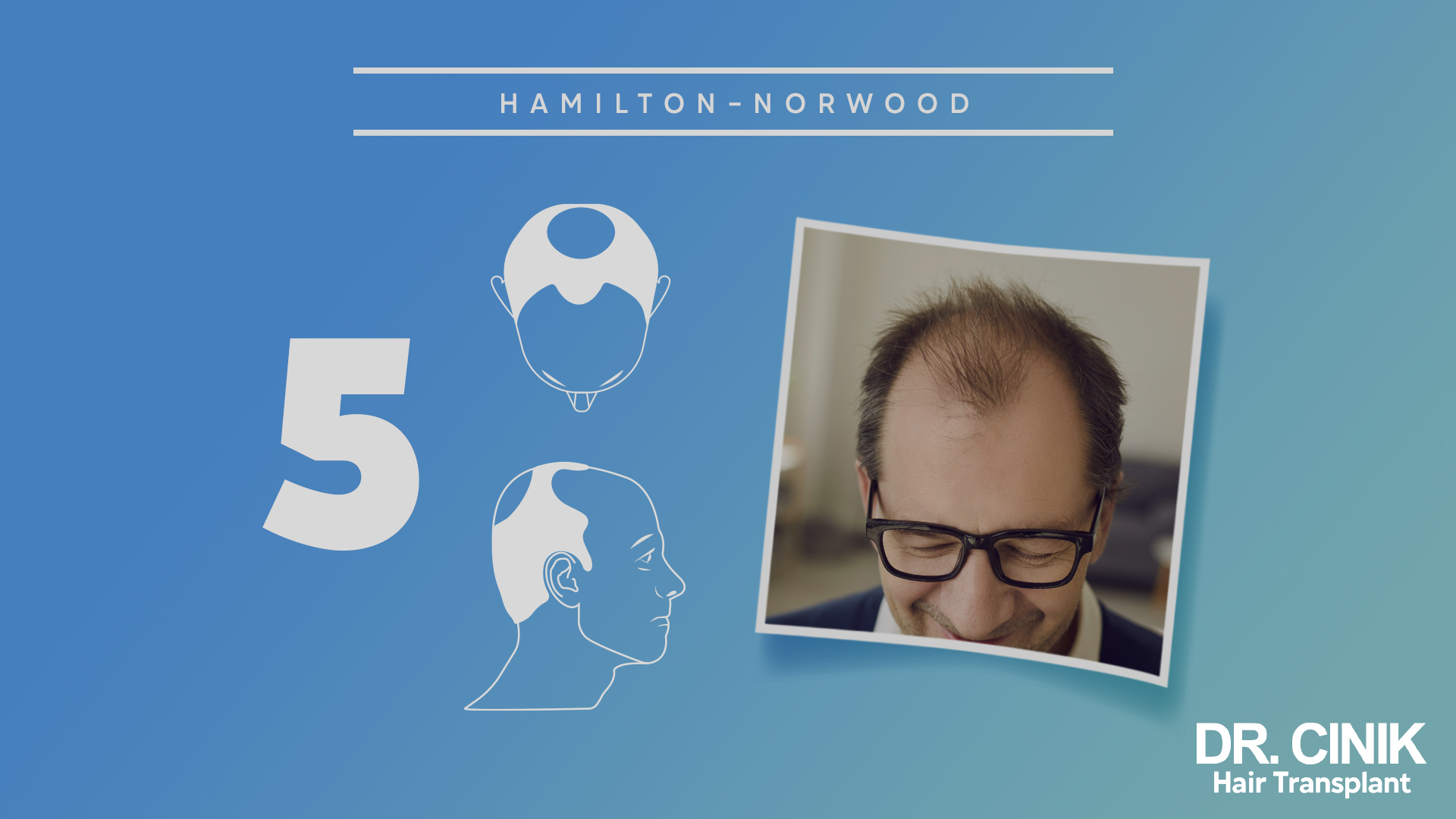
- Stages 6 and 7: Extensive hair loss, leaving only a ring of hair
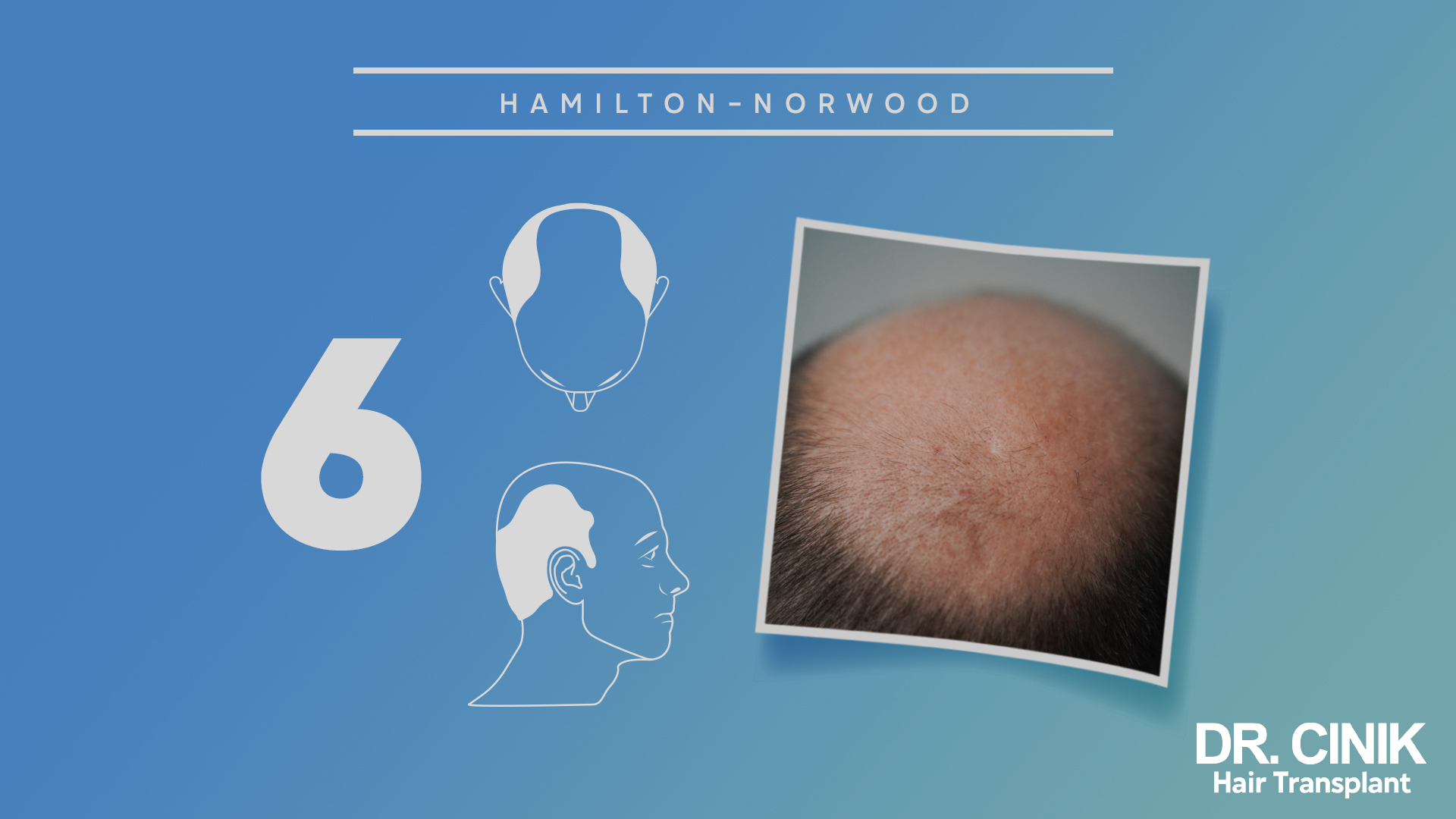
This scale helps doctors to diagnose hair loss, monitor its progress and determine the best treatment depending on the stage.
Why are the temples affected first?
Several theories explain the particular vulnerability of the frontal and temporal areas:
- Increased hormonal sensitivity: Follicles in these areas may be more sensitive to DHT.
- Reduced blood microcirculation: Less blood flow could affect the health of the follicles.
- Mechanical stress: These areas are more exposed to daily friction and handling.
- Differences in follicular density: A naturally lower density would make hair loss more visible.
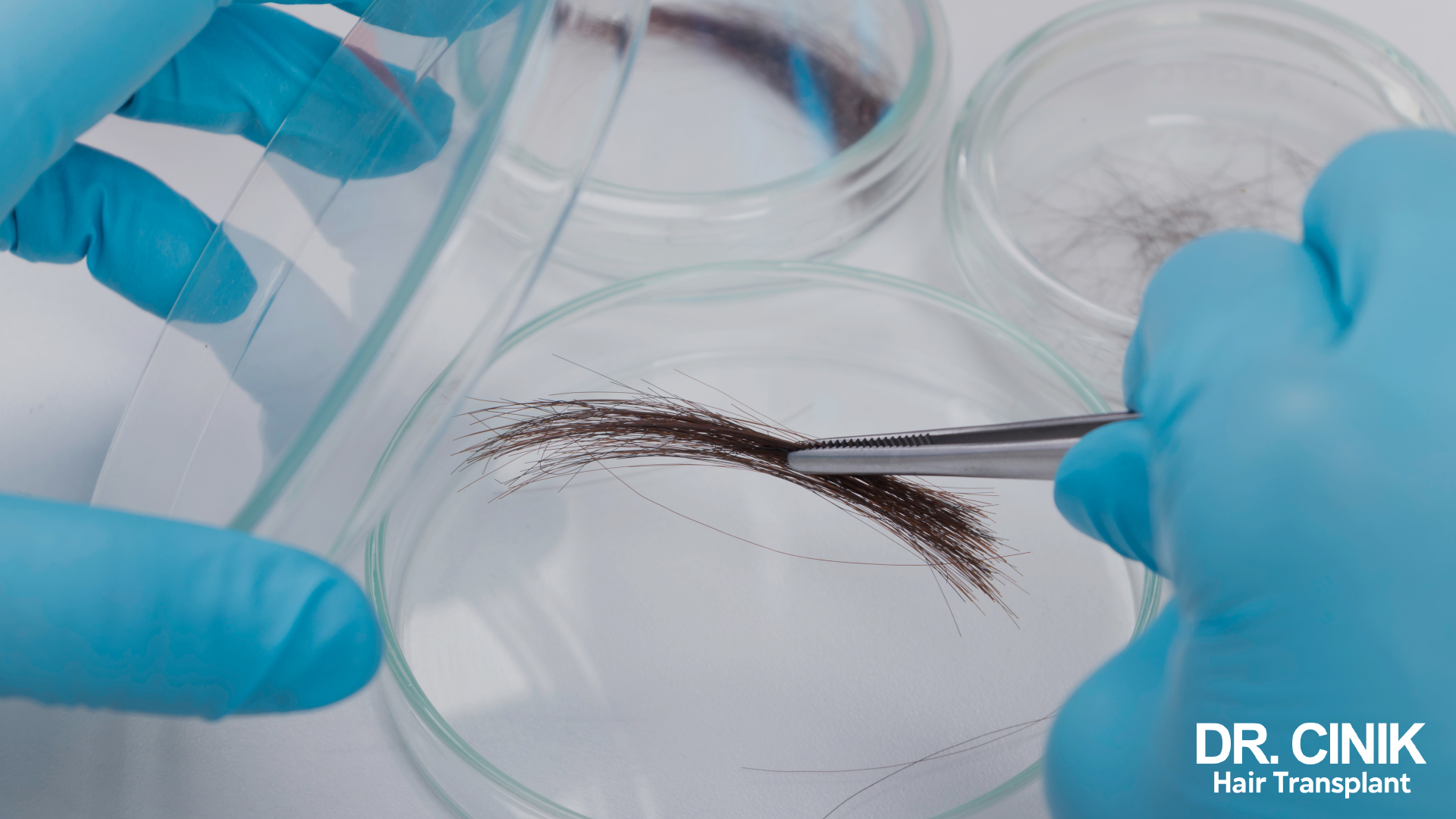
Recent research has highlighted a phenomenon known as “subclinical microvascular pseudo-insufficiency”, which could explain the particular vulnerability of the frontal and temporal areas in androgenetic alopecia.
This discovery, published in the journal “Advances in Dermatology and Allergology“, reveals that the areas affected by androgenetic alopecia have specific characteristics. They have a less developed vascular network, reduced scalp thickness, miniaturised hair follicles, reduced blood flow and reduced oxygen perfusion.
This ‘subclinical microvascular pseudo-insufficiency’ creates an environment less favourable to the growth and maintenance of healthy hair follicles. In this impoverished environment, the follicles could be more sensitive to the harmful effects of DHT. The miniaturisation of follicles could, in turn, contribute to a further reduction in local vascularisation, creating a cycle of progressive degradation.
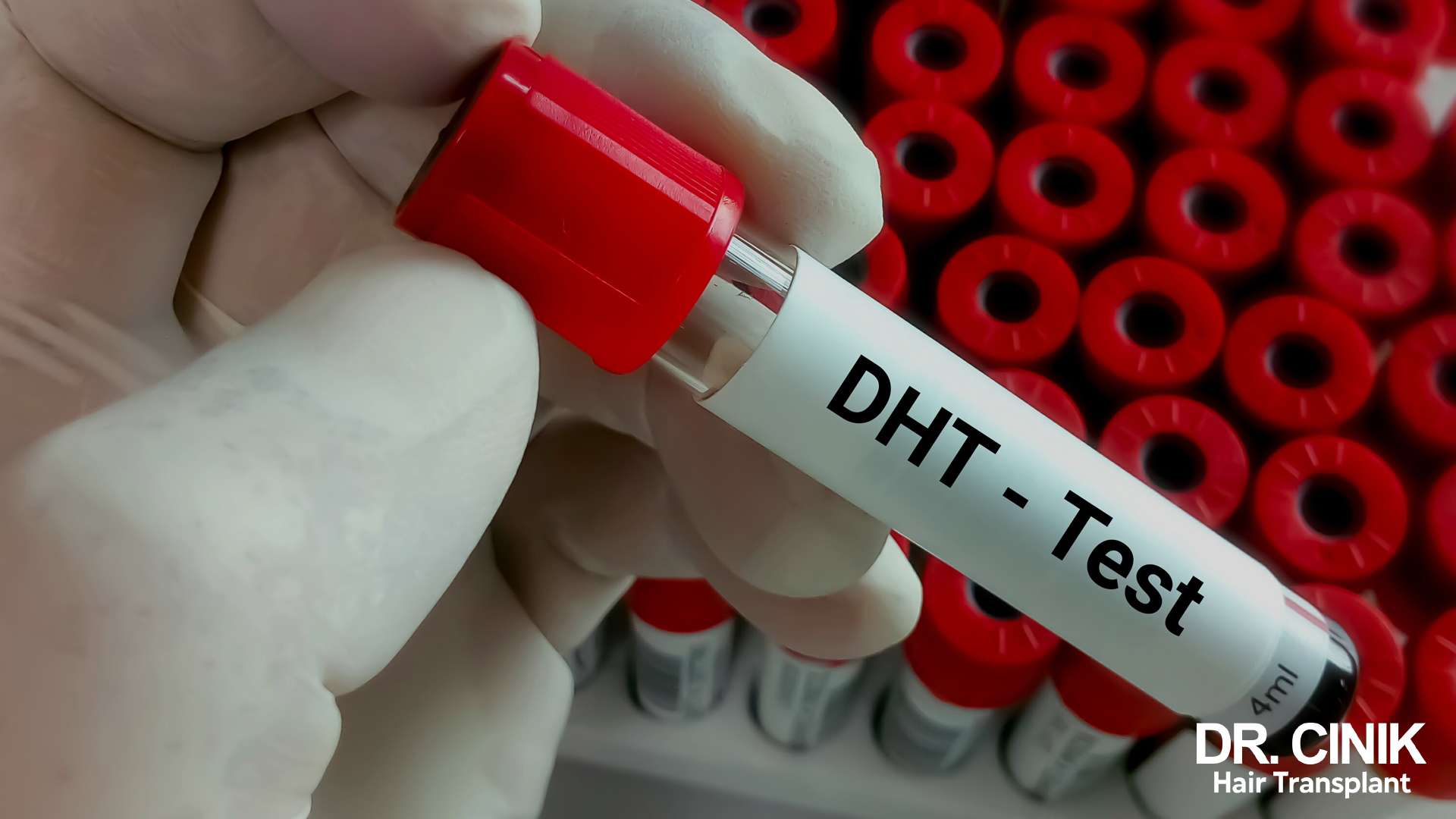
This discovery has important implications for the treatment of temple hair loss. It highlights the importance of treatments that improve blood circulation in the scalp, such as minoxidil. It also paves the way for new therapeutic approaches aimed at improving scalp microcirculation. It reinforces the importance of early treatment, before vascular changes become too significant.
Solutions to treat temple hair loss
Drug treatments
Two main treatments are approved:
- Minoxidil:
- Topical application (2% or 5%)
- Stimulates hair growth
- Effective in around 60% of patients after 48 weeks

- Finasteride:
- Oral intake on prescription
- Blocks the conversion of testosterone to DHT
- Effective in stabilising hair loss and promoting moderate regrowth
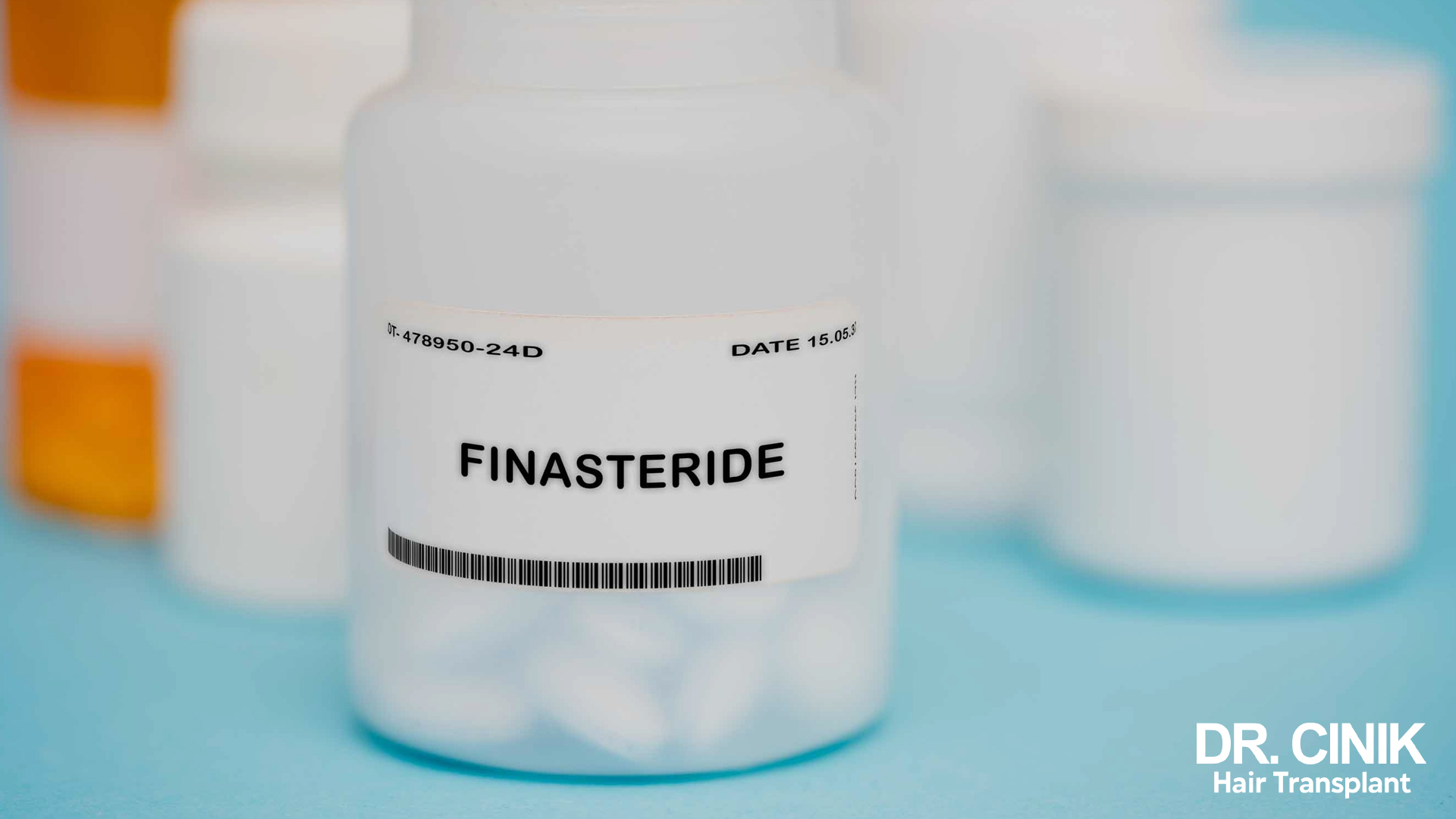
It is vital to consult a doctor before starting these treatments, as they require regular monitoring and can have side effects.
Hair transplant
For more advanced cases, hair transplants offer a lasting solution. Two main techniques are used:
The FUE (Follicular Unit Extraction) technique:
- Removal and transplantation of individual follicular units
- Minimal scarring, rapid recovery
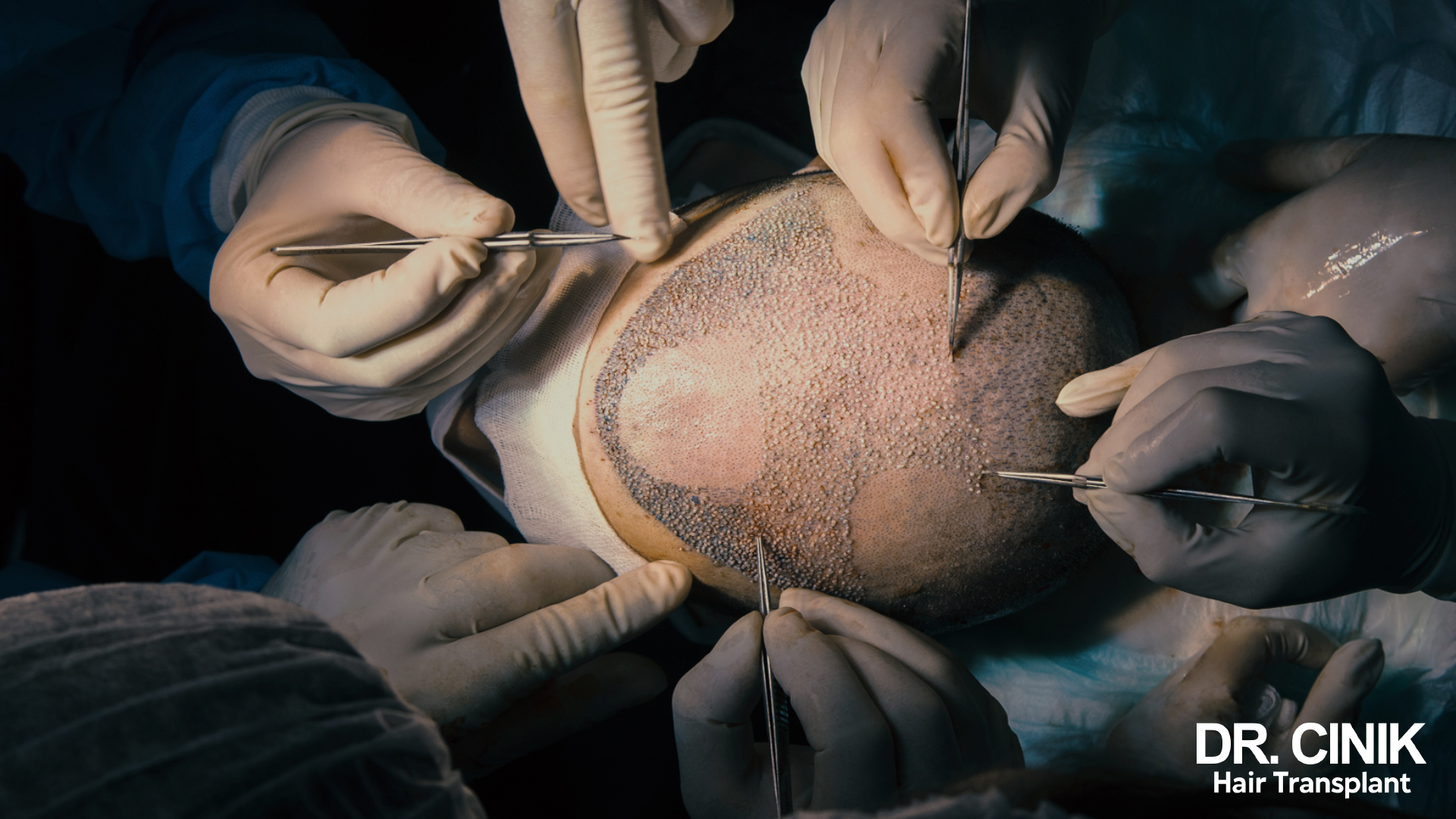
La technique DHI (Direct Hair Implantation) :
- Variante de la FUE
- Implantation plus précise et moins invasive
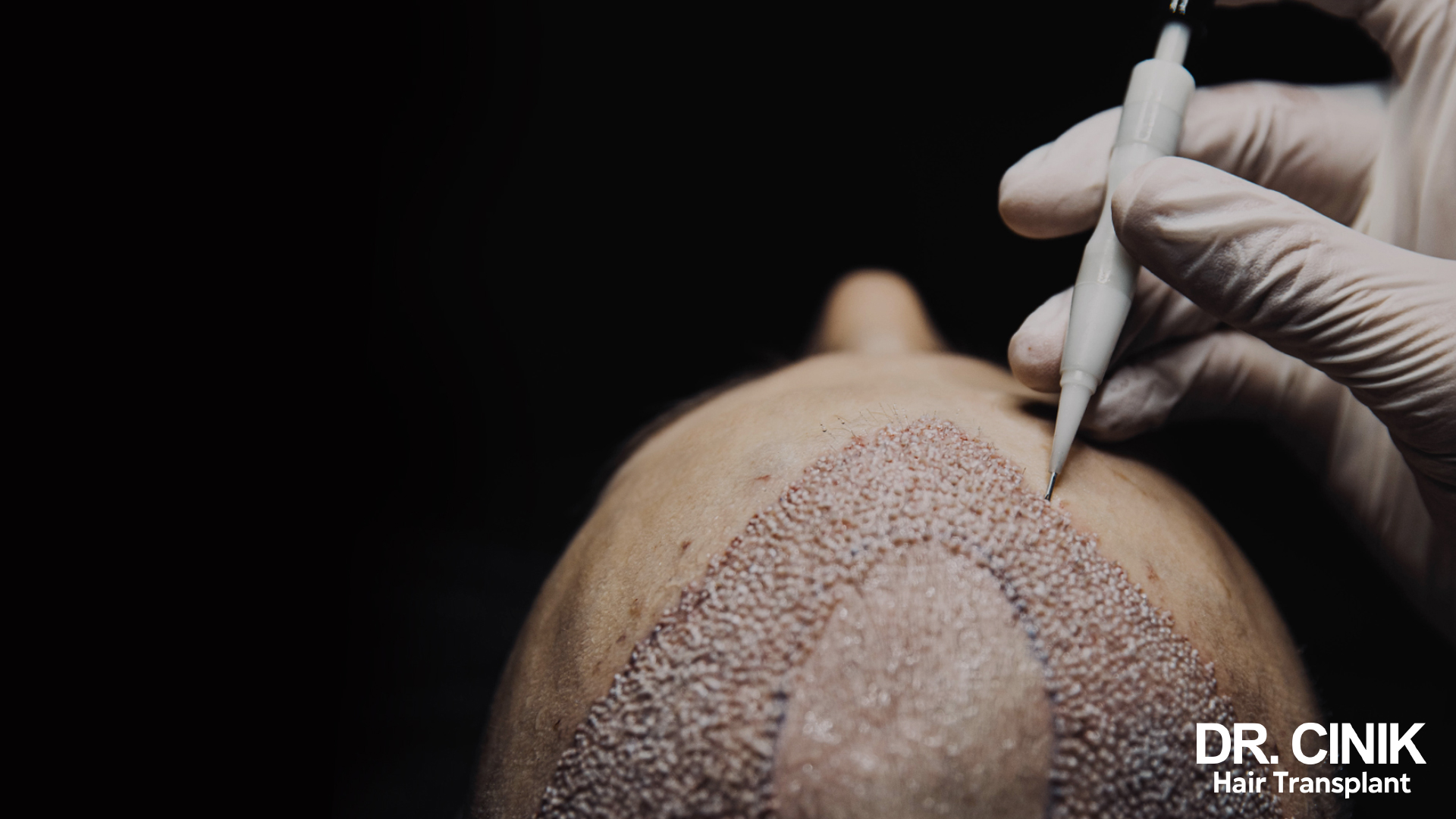
These techniques restore hair density in areas affected by temple hair loss, offering natural, long-lasting results.
Complementary approaches
In addition to medical and surgical treatments, several complementary approaches can be considered to treat temple hair loss:
- Platelet Rich Plasma (PRP): This therapy uses the patient’s own growth factors to stimulate hair follicles. PRP is obtained from the patient’s own blood and injected into the scalp to promote hair growth.
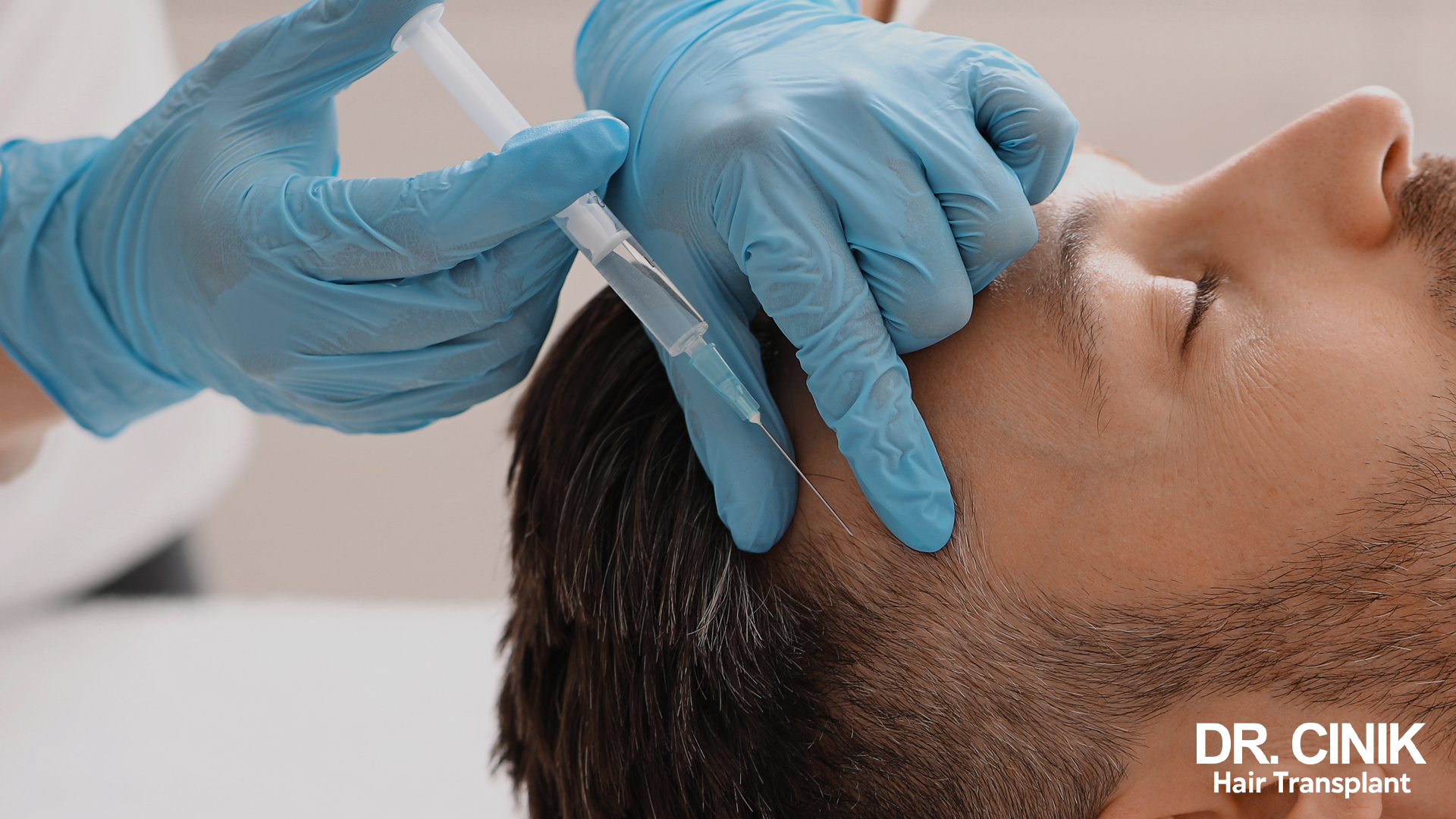
- Regenera Activa Hair Mesotherapy: This innovative technique involves taking a small tissue sample from the patient’s scalp, treating it to extract regenerative cells, and then re-injecting it into the areas affected by hair loss. Regenera Activa stimulates the regeneration of hair follicles and can improve hair density and quality. This method is particularly interesting for patients in the early stages of androgenetic alopecia.
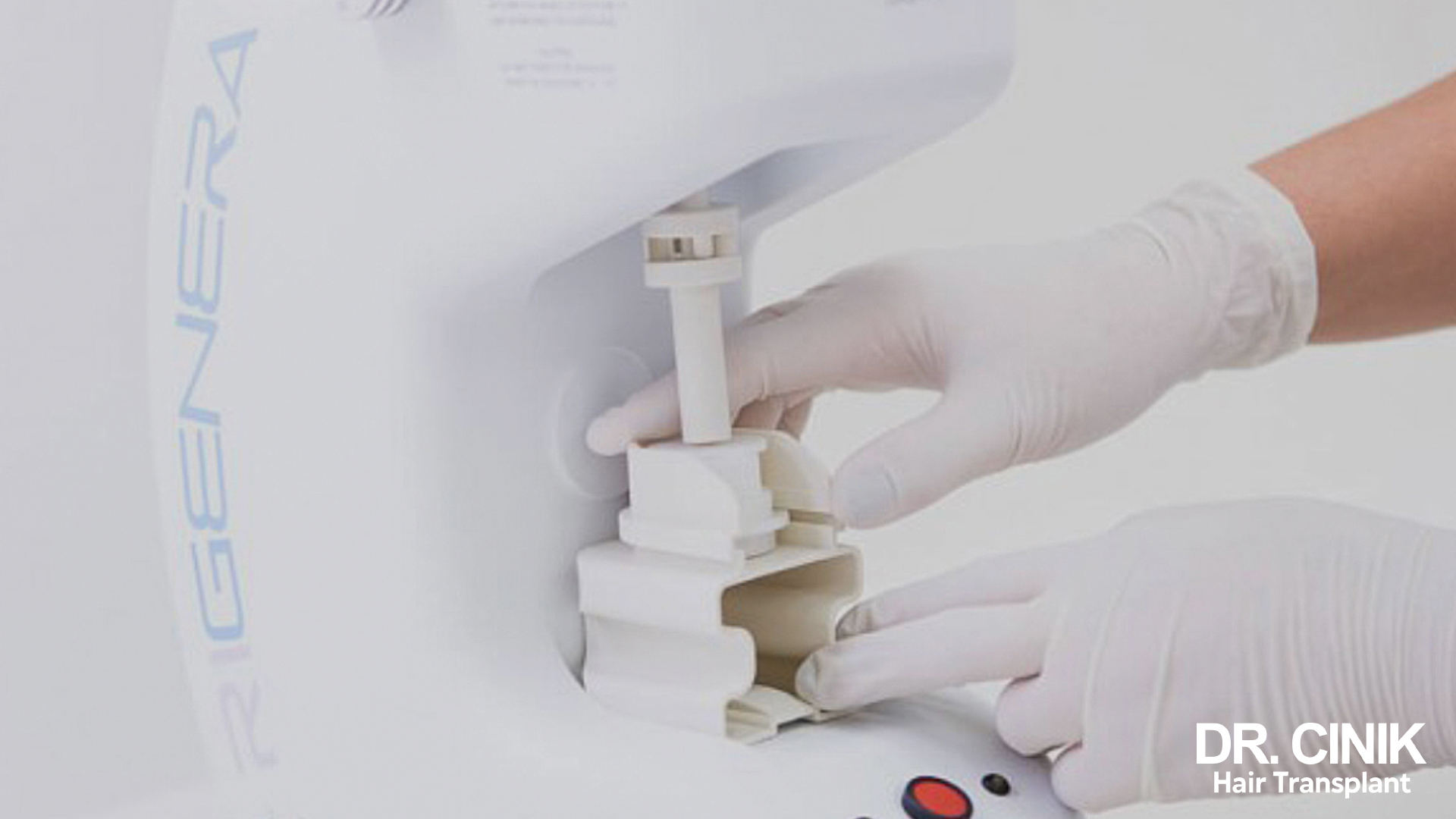
- Low-Intensity Laser Hair Treatment: This non-invasive therapy uses low-power red light to stimulate hair follicle cells. The low-level laser can increase blood flow to the scalp, stimulate follicle cell metabolism and encourage hair growth. This treatment can be administered in clinics or at home using portable equipment. It is generally considered safe and can be used alone or with other therapies.
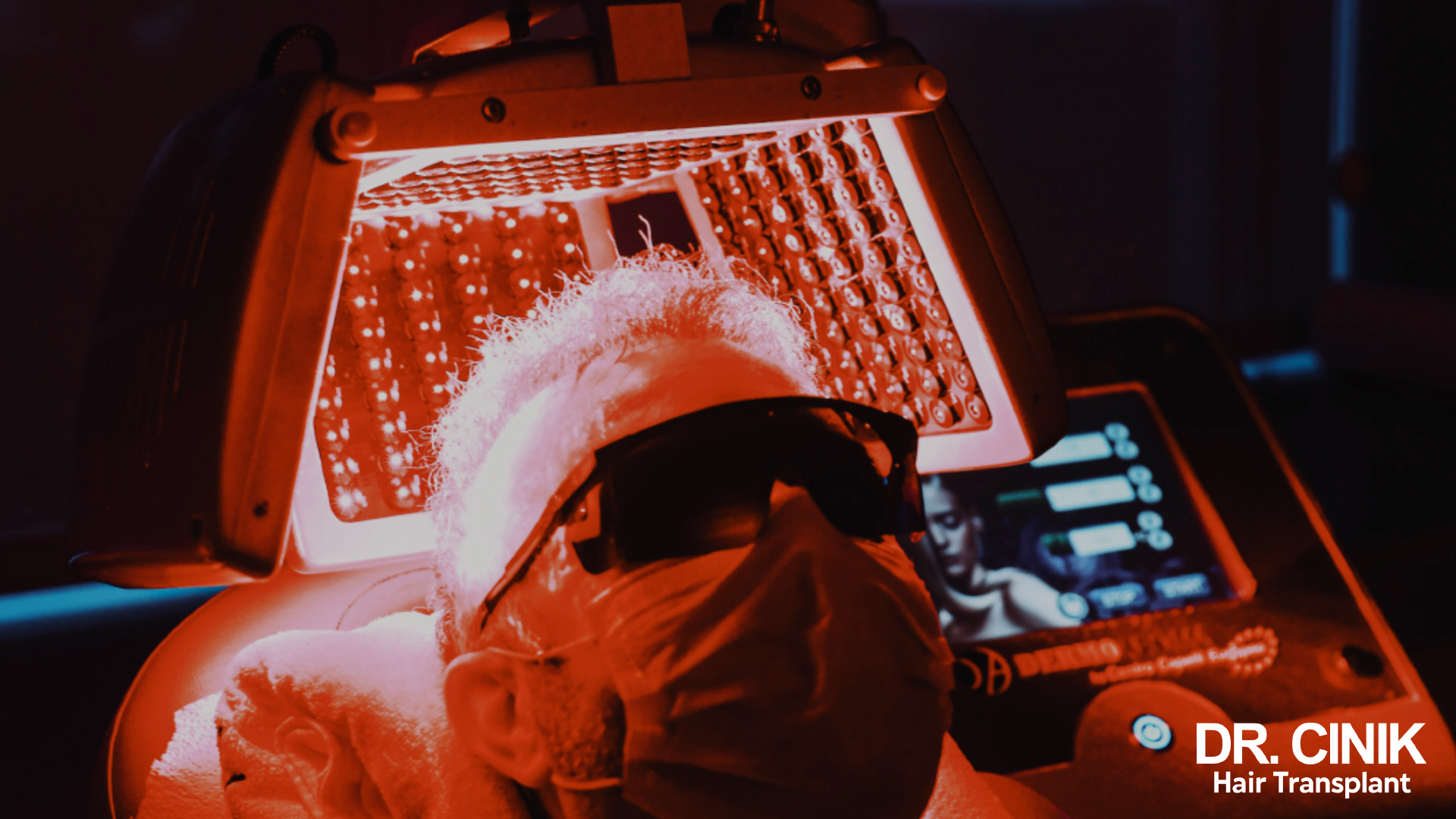
Conclusion
Temple hair loss, although common, is not inevitable. Early and appropriate treatment can slow its progression and even restore some of the hair lost. It is essential to consult a specialist at the first sign of hair loss to ensure a precise diagnosis and personalised treatment.
Advances in research, particularly into the microvascularisation of the scalp, point to promising treatments for the future. In the meantime, an approach combining medical treatments, scalp care and, if necessary, hair transplants offers the best chance of maintaining dense, healthy hair.
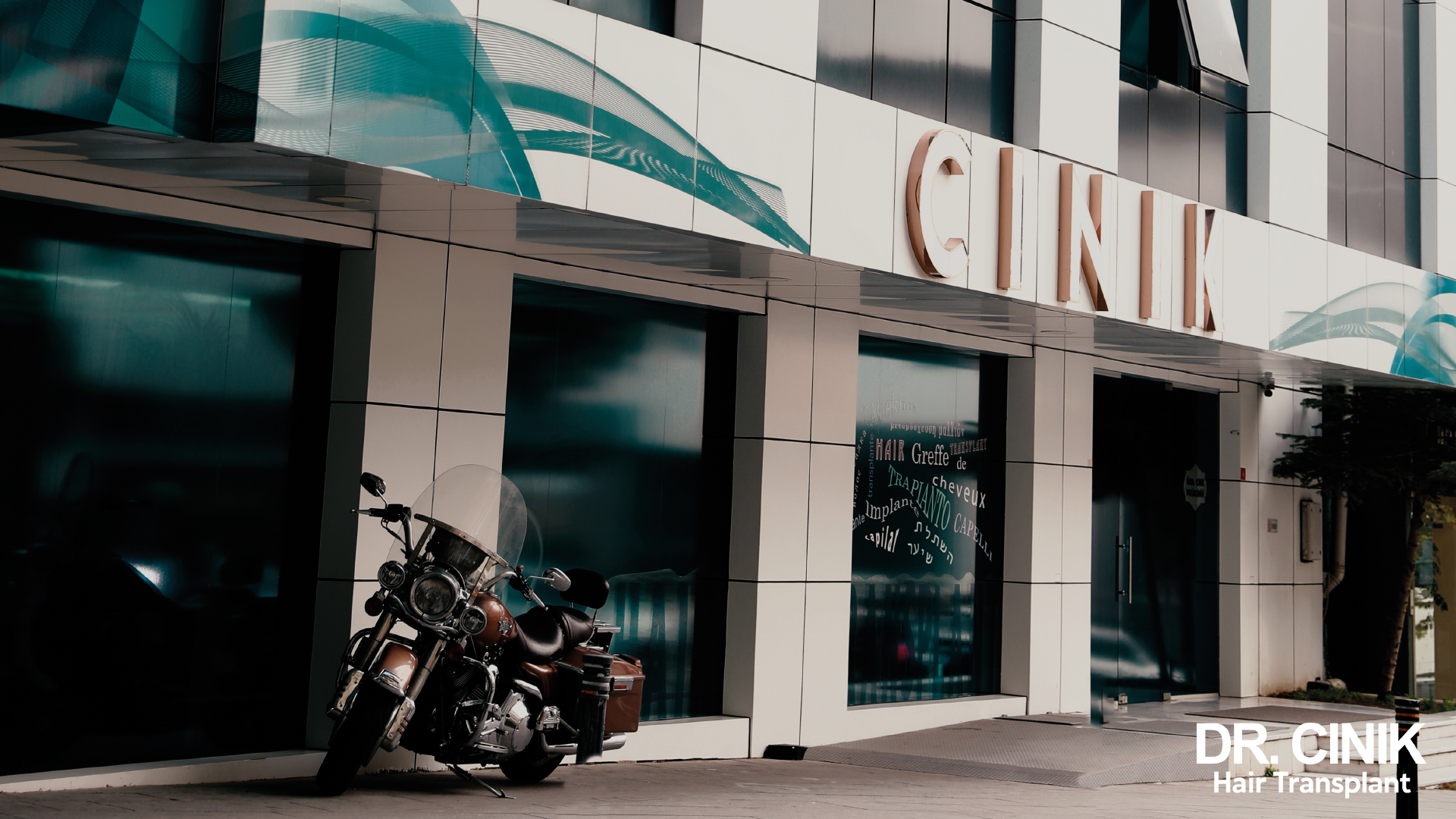
Experts such as Dr Emrah Cinik in Istanbul have helped advance hair restoration techniques in the field of hair transplants. Dr Cinik is renowned for his mastery of advanced techniques such as FUE Saphir and DHI. These methods provide natural results with faster recovery.
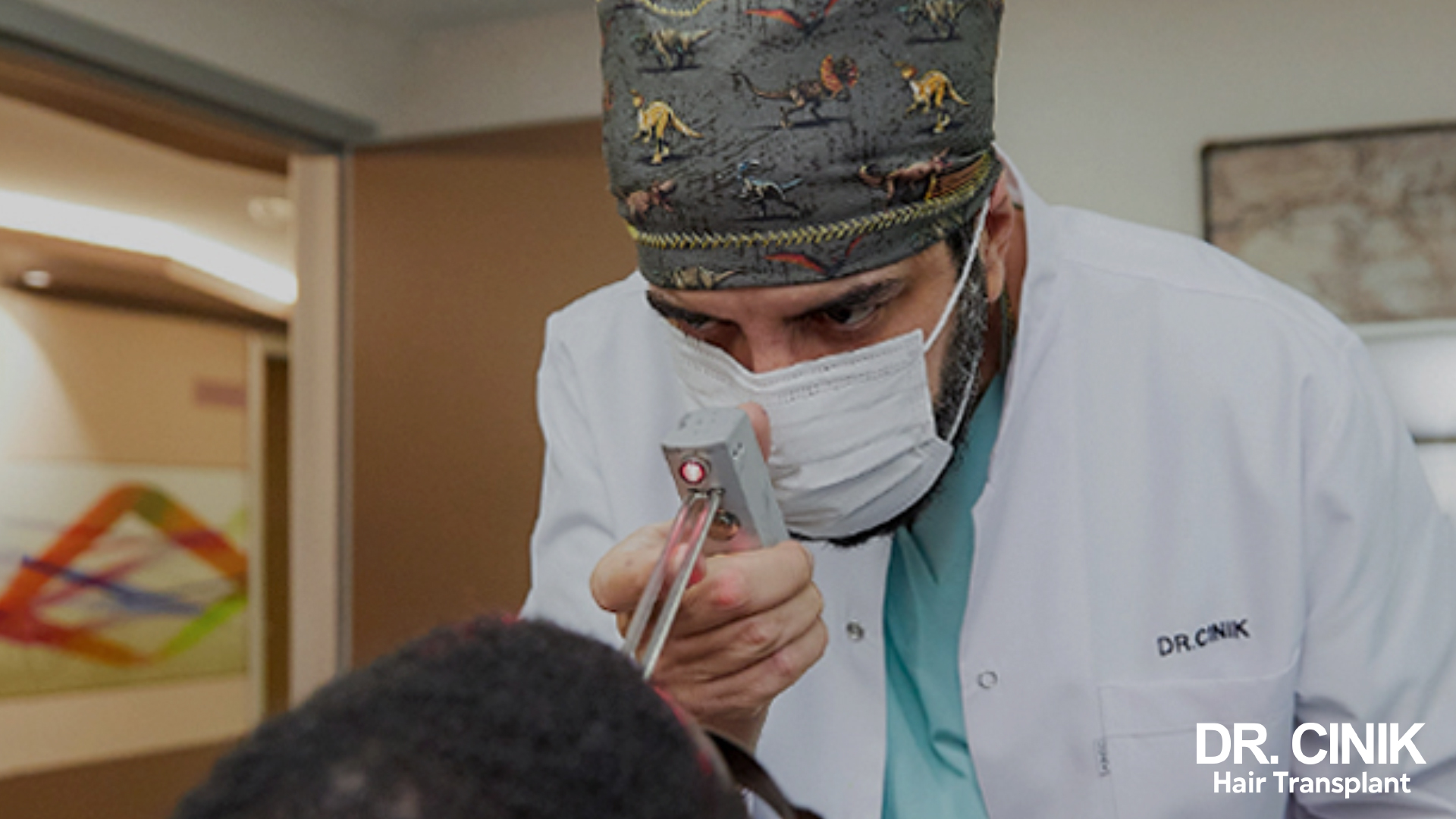
Remember that each case is unique, and the best treatment strategy will depend on your personal situation, your goals and your doctor’s advice. Whether you opt for drug treatments, complementary approaches or a hair transplant from experts like Dr Cinik, the important thing is to make an informed decision based on a professional consultation and a thorough understanding of your situation.
 en
en
